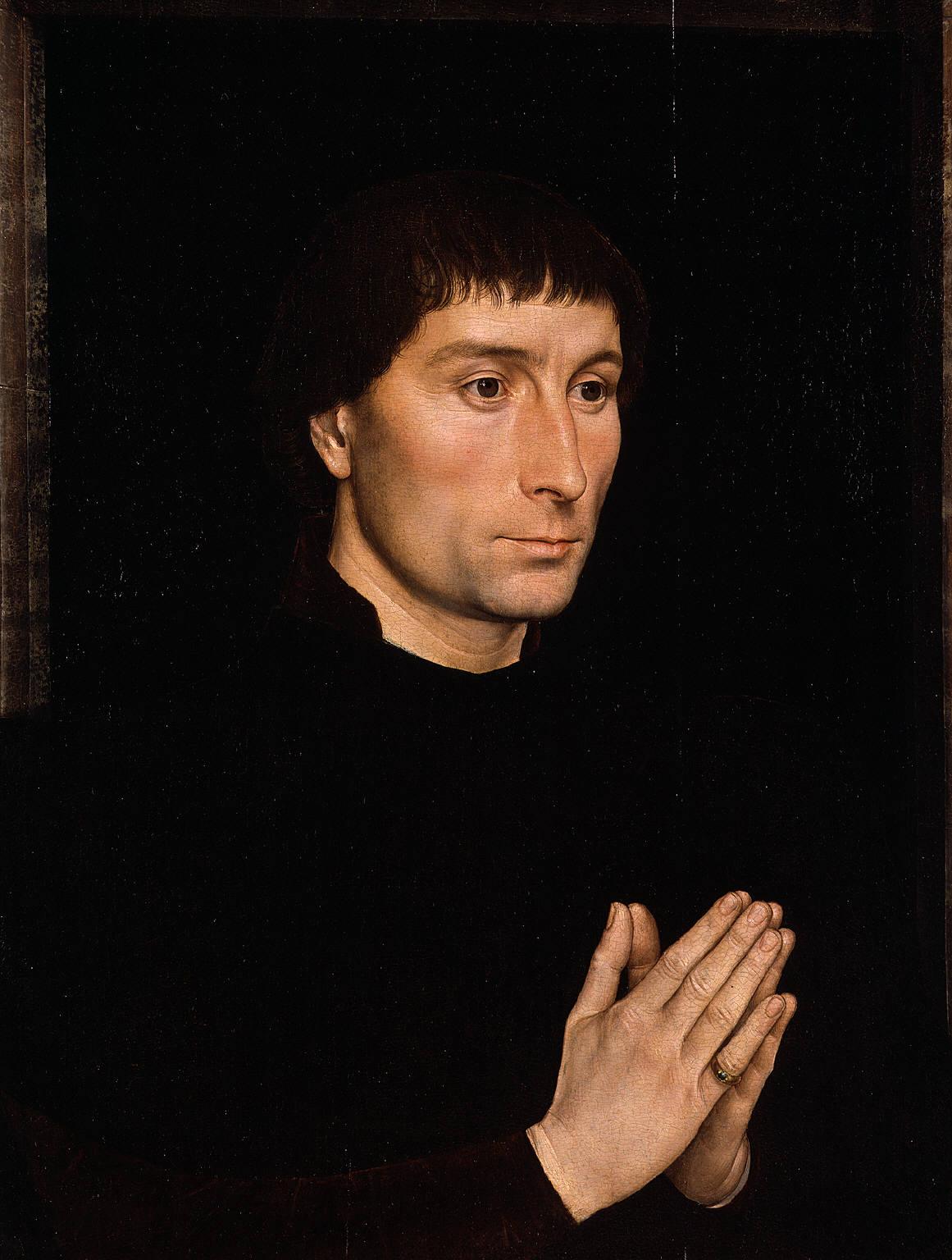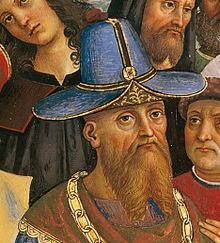I shall be telling this with a sigh
Somewhere ages and ages hence:
Two roads diverged in a wood, and I—
I took the one less travelled by,
And that has made all the difference.
"The Road Not Taken" by Robert Frost (1916)
The fall of Constantinople in 1453 might mark the end of the Roman Empire, but the imperial ambitions of Sultan Mehmed II, its young Ottoman conqueror, were just beginning. Over the following eight years the last fragments of Byzantium were methodically swept up around the Aegean and Black Sea coast, culminating in the surrender of Trebizond in the summer of 1461. At that moment, Mehmed - who had begun styling himself Cesar of the Roman Empire (Qayser-i Rum) - had a choice to make: with Anatolia and mainland Greece conquered, where would his formidable armies focus their attention during the campaign season of 1462? Hindsight tells us the answer, but in this article, I would like to look at the potential road not taken - and why.
Sultan Mehmed II was the quintessential Renaissance man. Quite aside from his military prowess, he wrote poetry, appreciated and sponsored European painters and spoke at least seven languages. Despite impeccable ghazi credentials as conqueror of Constantinople - 'the red apple' so long desired by warriors of Islam- he showed such an interest in the fundamental doctrines of Christianity that the Patriarch wrote a homily, The Confession of Faith, specifically for him and the Latin Pope began to entertain hopes of a miraculous conversion. This was wishful thinking; far from dreaming of pilgrimage to the Vatican, Mehmed once declared that St Peter's would make a fine cavalry stable.
It was no idle threat. Italy must have seemed the obvious target for a Turkish invasion in that first summer following Byzantium's elimination. Having conquered the eastern capital, the old western empire surely enticed a man with the deep interest in history that Mehmed repeatedly displayed. There is no doubt that many on the Italian peninsula feared it. As early as 1459, Pope Pius II had convened a counsel at Mantua to call for a crusade, but when they arrived, the princes of Europe were keener to discuss the competing Angevin and Aragonese claims on the Kingdom of Naples. Later that year war broke out in southern Italy between those two factions and sucked in armies from France, Milan and Genoa together with many famous mercenary companies. From 1459 to 1465, the southern half of Italy was in total chaos.
King Ferdinand I "Ferrante" of Naples
Exploiting division to make strategic territorial gains had always been the modus operandi of Ottoman conquest. The Byzantine civil war of 1352-1357 allowed the first Ottoman Sultan, Orhan, to snatch Gallipoli and establish an initial Turkish toehold on the European side of the Hellespont. With an almost equally short gulf now lying between Ottoman-held Greece and the heel of Italy, might Mehmed have seen an opportunity to repeat that history and begin his march up the peninsular towards Rome? There are several pieces of evidence to suggest this was being given serious consideration.
Italy in 1494
In his memoirs, Florentine merchant-spy Benedetto Dei recounts that while he was in Constantinople in 1460, he was summoned to an audience with the Sultan who proceeded to grill him on the political situation in Italy. In Dei's mind, it was clear that the Grand Turk was considering Italy as a target and so he says he sought to deter it by his answers, to which Mehmed replied:
"My Florentine, I have heard all you have said...and I believe it fully...but I answer you and say that Italy could no longer perform the great deeds it performed in the past, because in those days when it did wonders, the reason was the power of the Romans, who were then sole masters of Italy...but today you are twenty states and groups of powers in your country, and you are in disagreement among yourselves and bitter enemies...and I know many things which will all be of help to me in the plan I have made; and seeing that I am young and rich and favoured by fortune, I intend to surpass Caesar and Alexander and Xerxes by far."
The following year, while the last Byzantine jewel of Trebizond was being winkled from its Pontic enclave, a Constantinople-bound ship was stopped by Venetian authorities in Crete. On board was Matteo de Pasti, a sculptor and medalist, who had been resident at the court of Sigismondo Malatesta of Rimini. He had been sent ostensibly to work as a court portrait artist to Mehmed, but the Venetians found in his possession a detailed map of the Adriatic coast. Alarmed, they hauled him off to Venice and sent him back to Rimini with stern advise not to travel east again.
Commemorative medal of Sigismondo Malatesta made by Matteo De Pasti
The idea that Malatesta would sell out his countrymen is not too hard to believe. Among the most notorious of the Italian petty tyrants, he had been excommunicated the previous year by Pope Pius and suffered several setbacks in the conflicts over the crown of Naples. Shortly before De Pasti's departure, Malatesta is supposed to have threatened to send for the Turks if King Ferrante of Naples hired the famous Albanian warlord Skanderbeg. Ferrante duly did just that.
No invasion of Italy arrived in 1462 but Ottoman landings did take place almost two decades later in July 1480. By then the war for Naples had long since ended and the invaders faced a much tougher task against a secure King Ferrante. But if the conversations with Dei, the coastal map and the convenient chaos of Neapolitan civil war made 1462 the most opportune moment to launch the invasion, what caused the crucially long delay?
The answer might lie on the misty banks of the Danube in the winter of 1461 and an unlikely Italian saviour in the form of Vlad Dracula.
What today is southern Romania was in the medieval era a small principality called Wallachia, sandwiched between the powerful Kingdom of Hungary and Ottoman controlled Bulgaria. It’s ruler, Vlad, was no friend of the Hungarians who by 1461 had already attempted to depose him once, but he was a staunch Christian and perhaps inspired by the efforts of Pope Pius to galvanise a crusade, ceased paying the tribute tax (jizya) to the Sultan.
Following two years of non-tax payments and probably as an afterthought, the Turks decided to remove Vlad from Wallachia’s throne. The plan was to lure him to the Danube fortress of Giurgiu to meet and escort a diplomat back to his capital (Thomas Katabolenos, one of many Byzantines to be doing very well for himself in post-fall Constantinople). Hamza, the Ottoman bey of Nicopolis, would lie in wait at the meeting point with his men, ready to arrest or kill Vlad. But the ambush was botched. Vlad killed Hamza, Katabolenos and their men and true to his sobriquet, impaled the lot of them. With characteristic dark humour, Vlad said he had reserved the tallest stake for Hamza on account of his high-office. Then, in revenge, Vlad Dracula set off on a devastating terror raid across the frozen Danube, burning towns and killing thousands. In a letter he sent to the Hungarian king in February 1462 Vlad wrote:
We killed 23,884 Turks without counting those whom we burned in homes or the Turks whose heads were cut by our soldiers...Thus, your highness, you must know that I have broken the peace with him (Sultan Mehmed II).
Whatever Mehmed’s plan for 1462 it had to be shelved in the face of such provocation. Italy could wait. A firm answer to Vlad's provocation could not. In April that year, Mehmed led an army towards the Danube. Estimates vary on its size, but it was generally considered to be comparable to the one which had stormed Constantinople. A sledgehammer was being swung at the small nut of Wallachia.
Results were mixed. Vlad was removed but not killed (instead he fell into Hungarian hands) and by the following year the strategic map had once again changed. The Pope now had impetus behind his call for crusade and what has become known as 'The Long War' began in 1463 - the first of many conflicts between the Venetian and Ottoman empires. It played itself out across the Levant and involved Persians, Tatars, Serbs, Hungarians, Albanians and plenty of individuals from the often-divided families of the old Byzantine order. That war concluded in 1479 with the Treaty of Constantinople. The very next summer, Mehmed launched his doomed invasion of Italy at Otranto but by then the opportunity had gone and the campaign fizzled out. Frustrated, Mehmed died in May 1481, perhaps with sentiments not dissimilar to Robert Frost's poem on his mind.
This post was subsequently published in Excvbitor magazine: https://www.excvbitor.com/road-not-taken-ottoman-invasion-italy



















































